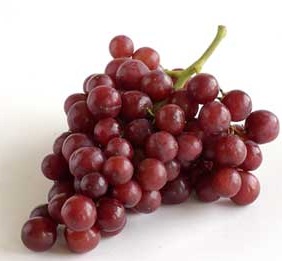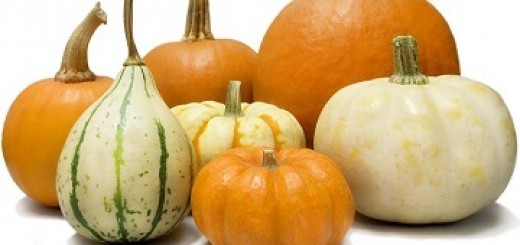Health Tips: Fruit of the Vine

Geri Wohl, CNC www.bettereatingcoach.com
Grapes are such an easy fruit to eat. Most of us have given our children grapes as a quick snack, added them to cheese plates, maybe even stewed them into compote, or used them as a condiment in the form of grape jelly. Grapes give a quick pick-me-up since they contain a fair amount of simple sugars. Even though their glycemic index falls in the middle of the range, early studies have suggested that they may help with blood sugar regulation. This may be due to the fiber and the antioxidants found in grapes. For specific ways to control your blood sugar, contact me at http://www.bettereatingcoach.com/index.html. Ripe grapes consist of an equal ratio of glucose and fructose. These two types of sugars are fermentable allowing grapes to be used for winemaking.
But did you know that grapes are actually members of the berry family? They are grown on every continent except Antarctica. Table grapes (the ones we consume), wine grapes and raisins are all from the Vitaceae family. There are over 60 different species of grape and thousands of varieties. Table grapes are usually larger in size, seedless and possess thinner skins as opposed to the smaller wine grapes that contain seeds and have thicker skins. Grapes are about 80% water. Raisins, also called sultanas, are dried grapes that are either dark from red or black grapes or white from green grapes. As dried fruit comprised of only 15% water, raisins have more concentrated sugars than raw grapes.
Grapes are relatively low in calories. One cup, which contains about 15-20 grapes, has about 104 calories, 1 gram of dietary fiber and 23 grams of sugar. Grapes are not a good source of protein. However, they are high in vitamin C and vitamin K, with 27% and 28% of the daily value respectively. They are also rich in manganese and have good amounts of potassium and vitamins B1 and B6.
 So what’s special about grapes? Grapes are rich in phytonutrients that benefit many of our body systems including the cardiovascular, respiratory, nervous and immune systems. In addition, these phytonutrients may aid in cancer prevention and are anti-inflammatory. They act as antioxidants to provide damage control from the free radicals that we encounter in the environment or from our own metabolism. The darker the color of the grape, the more antioxidants it contains. The number of different antioxidants in darker colored grapes is well into the hundreds. Resveratrol, one of the phytonutrients found mostly in the skin and seeds of red and black grapes, may play a role in longevity. In studies, resveratrol has been shown to increase expression of three genes related to anti-aging. For more on resveratrol, see my article http://www.bettereatingcoach.com/101712–wine-and-wellness.html. The highest concentration of antioxidants in grapes is found in the skin and seeds as opposed to the flesh. In fact, the flesh of the grape contains between 1/20th to 1/100th of the total antioxidant activity. So avoid peeling grapes.
So what’s special about grapes? Grapes are rich in phytonutrients that benefit many of our body systems including the cardiovascular, respiratory, nervous and immune systems. In addition, these phytonutrients may aid in cancer prevention and are anti-inflammatory. They act as antioxidants to provide damage control from the free radicals that we encounter in the environment or from our own metabolism. The darker the color of the grape, the more antioxidants it contains. The number of different antioxidants in darker colored grapes is well into the hundreds. Resveratrol, one of the phytonutrients found mostly in the skin and seeds of red and black grapes, may play a role in longevity. In studies, resveratrol has been shown to increase expression of three genes related to anti-aging. For more on resveratrol, see my article http://www.bettereatingcoach.com/101712–wine-and-wellness.html. The highest concentration of antioxidants in grapes is found in the skin and seeds as opposed to the flesh. In fact, the flesh of the grape contains between 1/20th to 1/100th of the total antioxidant activity. So avoid peeling grapes.
Our cardiovascular system, pumping blood and nutrients throughout the body, ensures that we have a ready supply of oxygen to all our cells. All our cells need to be protected from free radicals but particularly those that are rich in oxygen due to the chemical nature of free radicals. As our arteries possess high concentrations of oxygen, antioxidants are especially important in the circulatory system. Some benefits that have been linked to grape consumption include better blood pressure regulation, reduced LDL cholesterol levels and lowered LDL oxidation. There are also some theories that grapes play a key role in explaining the “French paradox”. Why is it that the French who consume large quantities of saturated fat have much lower levels of heart disease than would be expected? One possible explanation is that antioxidants in grapes and red wine are supporting their cardiovascular system by neutralizing the free radicals and preventing oxidative damage.
Grapes may also provide us with support for cognition. Studies have shown that consuming grape extracts may reduce these harmful free radicals that oxidize cells in the brain. In studies, the quantity of beta-amyloid proteins associated with Alzheimer’s disease has been reduced when grape extracts have been taken. So eating some grapes may be beneficial to your brain health and mental well-being.
Conventionally grown grapes are one of the fruits that are heavily sprayed with pesticides. Buying organic grapes is a safer choice. For tips on removing pesticides, see my article http://www.bettereatingcoach.com/7912-a-peach-a-day.html. To obtain the highest concentration of antioxidants, buy grapes that are fully ripe. They should be plump and wrinkle-free. The grapes should be firmly attached to the stems. Grapes will spoil and ferment when left at room temperature. Loosely wrap unwashed grapes in a paper towel and place in an airtight bag for up to 5 days in the refrigerator. If you are not using all the grapes at once, separate the grapes clusters instead of picking off individual grapes so that the stems will not dry out.
White (or green) grapes taste great but have fewer nutritional benefits than red grapes. You won’t obtain all the antioxidants, particularly the anthocyanins that give red and black grapes their color. But you will get some antioxidants as well as vitamins A, C and K and calcium and iron. They also have fewer oxalates for those that have a history of kidney or gallstones. Note that eating too many grapes can have a laxative effect. Even with these potential negatives, grapes are beneficial. Just don’t eat them alone. For a delicious salad, try my mizuna, pomegranate and walnut salad at http://www.bettereatingcoach.com/recipe-fall-2012.html. Enjoy these fruits of the vine.
© Geri Wohl, CNC










